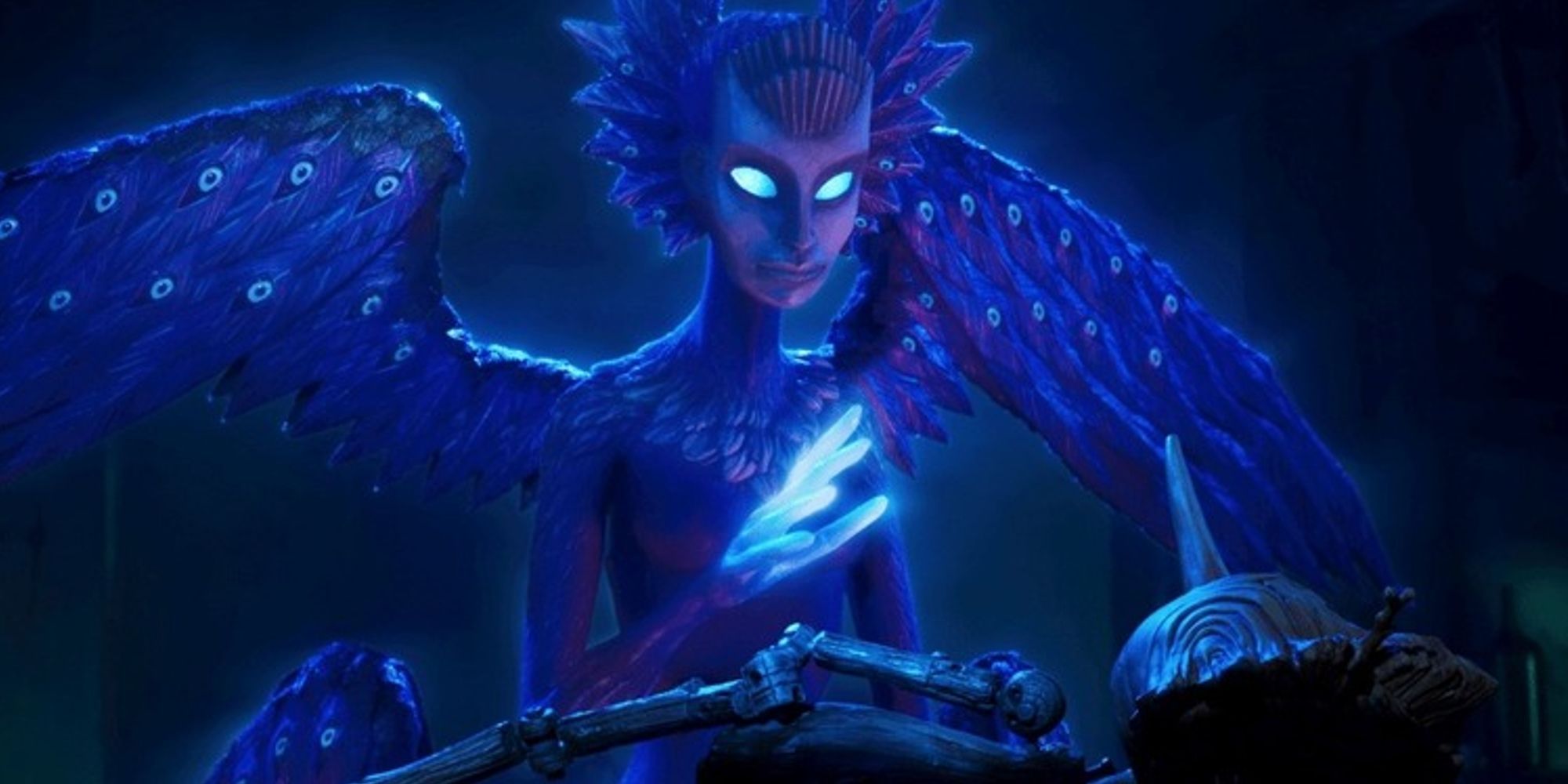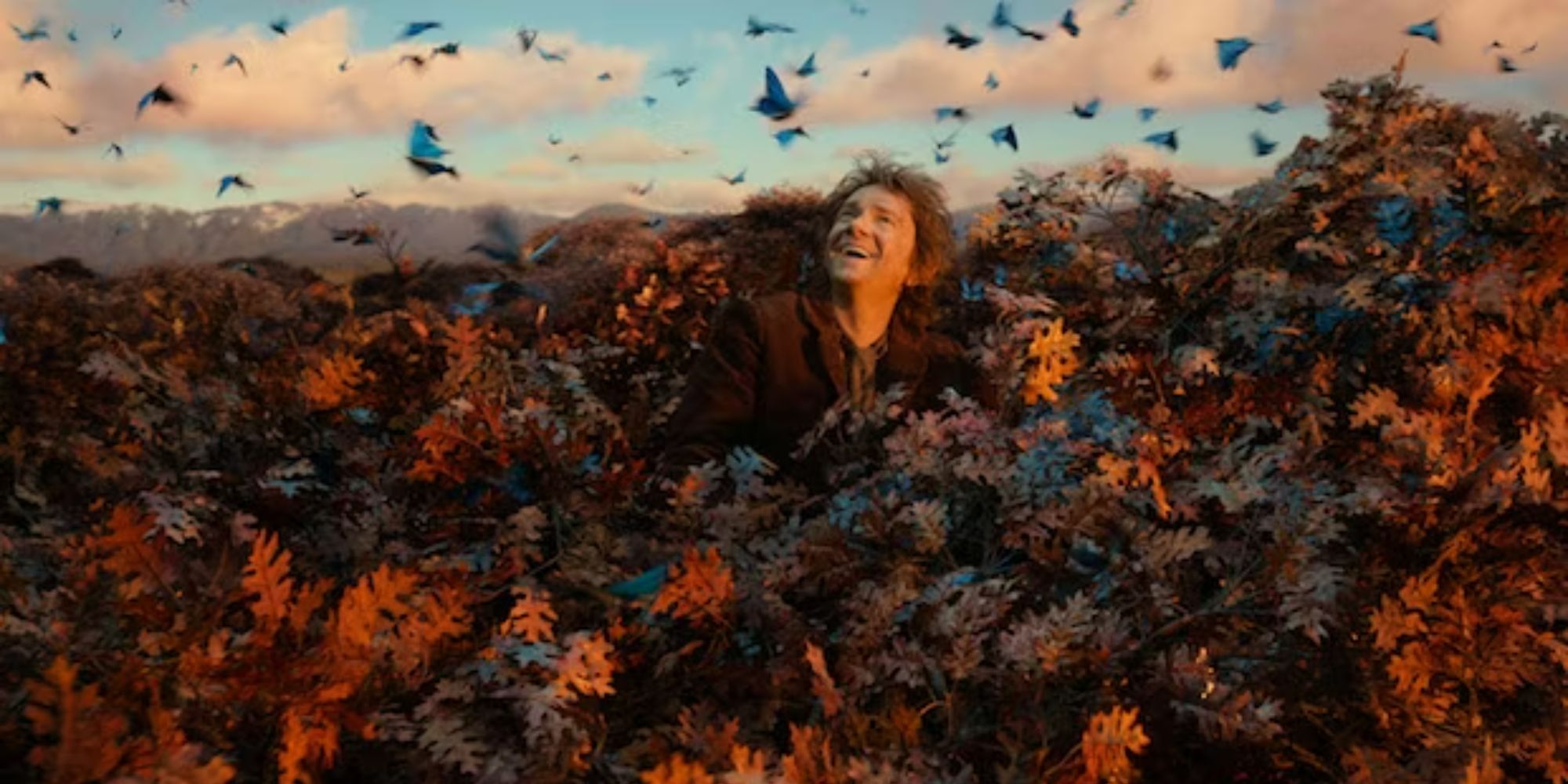
Del Toro’s proposed involvement in The Hobbit was initially greeted with palpable excitement. Although his movies have not historically been known for the same epic scale and extravagance as Jackson’s, projects like Pan’s Labyrinth and The Devil’s Backbone demonstrated del Toro’s ability to tell fantastical stories. Unfortunately, production delays forced the Mexican-born director to abandon his plans, despite extensive pre-production and design work. However, while Jackson’s Hobbit trilogy has seemingly extinguished all hope of seeing del Toro’s vision brought to life, one 2022 project suggests that revisiting The Hobbit would still be a worthwhile endeavor.
Pinocchio Proves We Need More Del Toro Versions Of Classic Stories
The Movie Was A Major Critical Hit










Part of the concern around the initial proposals for The Hobbit was how faithfully any adaptation could recreate Tolkien’s story. Unlike The Lord of the Rings, The Hobbit is a relatively short book. This made some critics skeptical (both before and after Jackson’s movies were released) that a lengthy trilogy was the right way to go. However, while Jackson’s approach was ultimately criticized in many quarters for unnecessarily elongating the story, del Toro has plenty in his back catalog to suggest that his approach would feel more true to the original. Specifically, his 2022 movie Pinocchio demonstrates how adept he is at adaptation.
Guillermo del Toro’s Pinocchio is available to stream on Netflix.
Based on the 19th-century novel The Adventures of Pinocchio, del Toro’s movie was critically acclaimed on release. Boasting an impressive 96% rating on the review aggregator Rotten Tomatoes, the film was praised for its bold changes to the source material, its expert use of stop-motion animation, and dark fantasy storytelling that evoked many of the more sinister elements of the original text. On its own terms, the movie was considered a major success. However, it also highlighted how capable del Toro is of bringing popular stories to life, infusing them with his own unique aesthetic. This is a trait he could still bring to The Hobbit.
Peter Jackson’s Hobbit Films Shouldn’t Be An Obstacle To Del Toro’s Take
Pinocchio Also Had To Contend With Other Adaptations










It’s not just that Pinocchio was a successful adaptation of a popular book that proves why del Toro should return to The Hobbit. In fact, its existence counteracts one of the major arguments against del Toro’s vision ever coming to fruition – namely, that we already have a Hobbit adaptation in the form of Jackson’s movies. Despite their financial success, Pinocchio‘s history proves that existing adaptations needn’t be an obstacle to future versions.
Not only was Pinocchio famously adapted into an animated Disney movie in 1940, but the novel has received dozens of different adaptations across the 20th and 21st centuries. Perhaps most pertinently for The Hobbit, del Toro’s own version was preceded by a live-action Disney remake in the same year. This demonstrates that proximity doesn’t mean an alternate version can’t succeed. It’s been 12 years since The Hobbit: An Unexpected Journey arrived on screens – far longer than the gap between Disney and del Toro’s competing Pinocchios. Just because one Hobbit series already exists, they aren’t automatically the definitive take on the source.
Like Pinocchio, The Hobbit Is Still A Perfect Fit For Del Toro’s Style
There’s A Reason Why He Was Originally Selected To Direct
Although it was animated, rather than the live-action style originally proposed for del Toro’s Hobbit project, Pinocchio nonetheless exemplifies why the director would be perfectly suited to Tolkien’s world. Much of what makes del Toro successful is his willingness to embrace darkness. This runs right the way through his work, from the horrific monsters of Pan’s Labyrinth to the authoritarian tendencies of del Toro villains like Michael Shannon’s Strickland in The Shape of Water. It’s on full display in Pinocchio, too, with the movie featuring genuinely disturbing scenes of death and violence.
Much of the power of Tolkien’s book comes from the juxtaposition between the wonder of the fantasy world and places like Rivendell against the genuine peril posed by horrific threats…
This ability to balance dark, difficult themes within the context of a children’s story makes him a perfect choice for The Hobbit. Much of the power of Tolkien’s book comes from the juxtaposition between the wonder of the fantasy world and places like Rivendell against the genuine peril posed by horrific threats like the Mirkwood spiders and the terrifying dragon, Smaug. This constant interplay between light and dark is exactly what helped make Pinocchio such a critical hit and would translate perfectly to Tolkien’s surprisingly murky Middle-earth.
Another aspect of Pinnochio that demonstrates just what del Toro would bring to The Hobbit is the distinctive look of the film. As in all del Toro projects, Pinnochio‘s characters have a strange beauty that is both magical and slightly nightmarish. The movie’s depiction of Death echoes the faun from Pan’s Labyrinth, while the terrifying leviathan featured in the film’s climax is a clear indication of the design del Toro could have brought to a creature like Smaug. The director has consistently proven that creating distinctive magical creatures is one of his biggest strengths – essential in any Tolkien story.
We Deserve Truly Great Hobbit Movies – And Del Toro Could Deliver
Jackson’s Trilogy Leaves A Lot To Be Desired










While the success of del Toro’s Pinocchio proves that his Hobbit could be a success, it is perhaps not the most compelling reason for a fresh perspective on the story. The fact is that, for all their financial success, Peter Jackson’s movies were a disappointment to many people. Unlike The Lord of the Rings, which lent itself to movies with extraordinary scope and scale, The Hobbit is a much more self-contained adventure. The attempt to imbue The Hobbit with the same epic sense ultimately left the films feeling bloated, creating inevitable unfavorable comparisons to The Lord of the Rings.
It’s easy to see how del Toro’s unique perspective could alter aspects of Jackson’s version, bringing new ideas to the table and potentially creating something more in line with Tolkien’s intention.
It’s easy for fans to feel disappointed at this outcome. However, the fact is that the situation is actually an opportunity. Unlike The Lord of the Rings, which are considered cinematic touchstones by many, there is potential for improving The Hobbit with an alternate take. It’s easy to see how del Toro’s unique perspective could alter aspects of Jackson’s version, bringing new ideas to the table and potentially creating something more in line with Tolkien’s intention. As the first attempt proved, there are many legal and organizational hurdles. However, the inevitable complexity doesn’t mean del Toro’s The Hobbit shouldn’t still happen.





